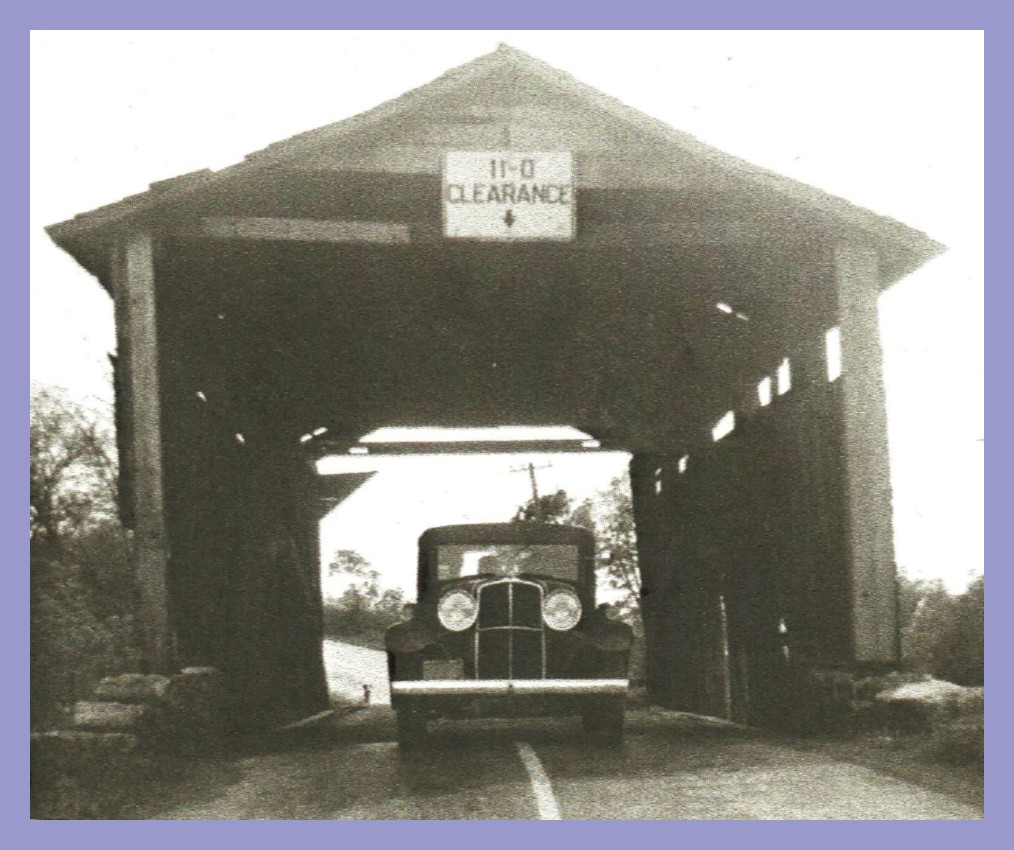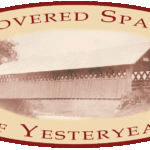This photograph of the Specktown Covered Bridge, Lykens Township, Dauphin County Pennsylvania, shows how narrow this bridge was. Although there is a painted line in the road indicating two lanes, the bridge really couldn’t accommodate two vehicles at a time traveling in opposite directions. The picture also shows how badly the bridge had deteriorated by the 1940s, with it appearing to lean to one side (left vertical support). Some of the siding boards are rotted or missing and there are several holes in the roof. From the other available photo of the bridge, the triangle support pieces are shown on the “front” side, or west side of the bridge – the side facing Specktown. In this photograph, the triangle support pieces are shown on the “back” side of the bridge indicating that the car is facing east, or heading toward Gratz. The beginning of the blind “s” curve can be seen beyond the bridge.
The time that this bridge was constructed has not been found as of this writing, but it surely dates to the 19th century. It appears from the photograph that this bridge was of the type designed by Theodore Burr, a double-arch structure in which the arches rested on abutments on either side of the stream, and to which a king-post structure was added for additional strength. The bridge was demolished at about the same time improvements to Specktown Road were made in the late 1940s and the “s” curve was eliminated by cutting through several Lykens Township properties.
There is a note with the picture that the automobile is a 1931 Nash, although that has not been independently confirmed. Autos were not made in the United States during World War II because factories converted to wartime needs, and gasoline was rationed. Most people who had cars that were made before the war kept them going throughout the 1940s until new cars became readily available as the assembly lines returned to peacetime production. There does not appear to be a driver in the car and it is not known why the car is parked in the middle of the road – perhaps to show how narrow the bridge actually was.
There is a great deal of local legend and lore associated with this covered bridge. Several years before she died in 2003, Kathryn [Dietrich] Gasbarro, who was raised a short distance from the bridge, gathered memories from family and wrote down quite a few of the stories and sent them to a local historical society where she assumed that they would be preserved and re-told as she remembered them. It is not known what happened to those letters, but nothing was published during her lifetime. Questions about her recollections a photograph she mailed with the letters were met with blank stares in 2010 by the person to whom she supposedly sent the information. Hopefully, much of what she remembered can be accurately reconstructed by family members and will be reported here as time permits.
Corrections and additional information should be added as comments to this post.
______________________________
See also:

